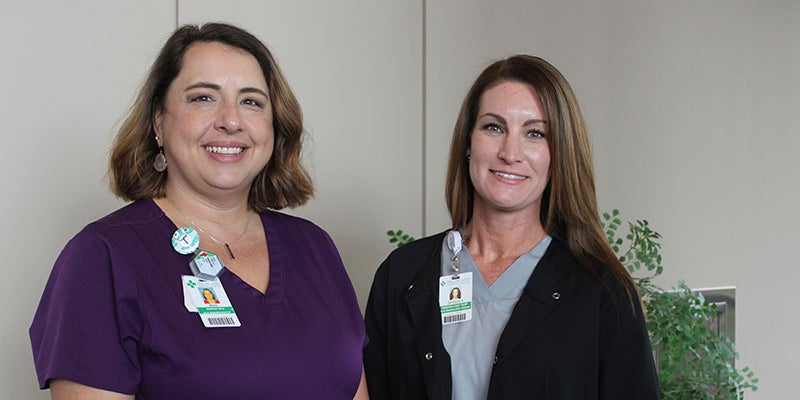Breast cancer screenings available at Highland Community Hospital
Published 7:00 am Saturday, October 10, 2020

- From left, Abbie Turnage and Jessica Ladner are mammography technicians at Highland Community Hospital. They have several diagnostic tools they can use to detect breast cancer, including screening mammograms, diagnostic mammograms, a breast ultrasound or a breast MRI. Cathy Cook | Picayune Item
Breast cancer screenings can help detect cancer early, but with the COVID-19 pandemic, many patients have not come in for their annual mammograms.
Mammography technicians at Highland Community Hospital are taking precautions to make sure it’s safe for those patients to get those mammograms.
“We’re taking every precaution that we can to make sure that everything is clean and safe for every patient to come in and get their mammogram,” said Abbie Turnage. “There are a lot of people who didn’t come in during the first few months when everything was so unknown and unclear. It’s safe for you to come back in and get those mammograms now.”
Turnage said a lot can change in a year, so they don’t want patients to miss their annual mammogram.
“The screening process is very important because it allows us to catch breast cancers very, very early, and once they’re caught very early the prognosis is much better,” said Jessica Ladner.
“If they wait until they have a problem then usually it’s been there for a long time.”
One in eight women will develop breast cancer in their lifetime, said Turnage. A common misconception is that men do not get breast cancer, but they can and mammograms are just as effective for men.
Typically the screening process for breast cancer begins at age 40 for women, said Turnage.
“If you have a strong family history of breast cancer you would need to start at age 35 with the screening process,” she said.
Women frequently ask her at what age they can stop getting mammograms.
“The greatest instances of breast cancer occurring are between the ages of 50 and 70, so you’re actually more likely to get it older than you are younger,” said Turnage.
“A lot of people think, ‘Well I can get a mammogram and then I can stop getting my mammograms just like I stop doing my pap smears when I reach a certain age’…but you actually are more likely to develop it between the ages of 50 and 70 than you are as a younger person.”
Screening mammograms are a fast process, said Turnage.
“The compression is required because that’s what actually allows us to distribute the tissue out so that we can see that something’s not overlying,” she said.
If anything is found in the screening mammogram, technicians at Highland can use diagnostic tools like a diagnostic mammogram, a breast ultrasound or a breast MRI to do further testing.
The technology for screening for breast cancer has improved significantly over the past 40 years to make tests more comfortable and less invasive, Turnage said.
“A lot of patients say that they didn’t come because they were scared,” Ladner said. “They thought it was going to be so painful and then when they actually come for the procedure they realize that it’s not that bad.”
Signs that someone may have an issue within the breast include a lump, a mass, skin issues like dimpling, redness, scaly-ness or thickening, skin retraction or nipple discharge other than lactation.
“It could be that it’s nothing, but we want to make sure that that is the case, so the best way to do that is to talk to your provider,” said Turnage.



